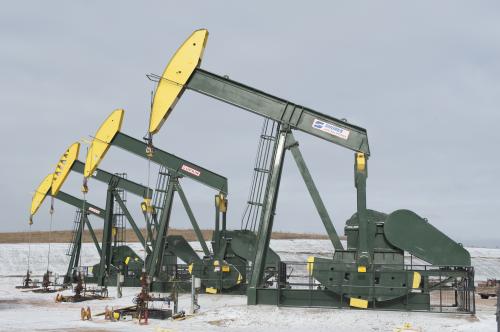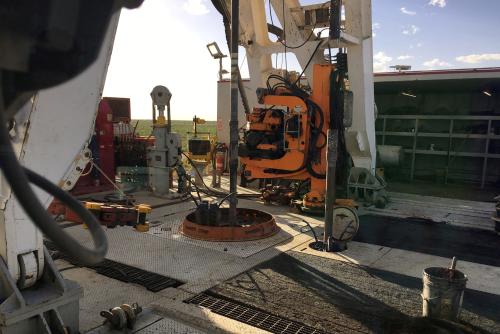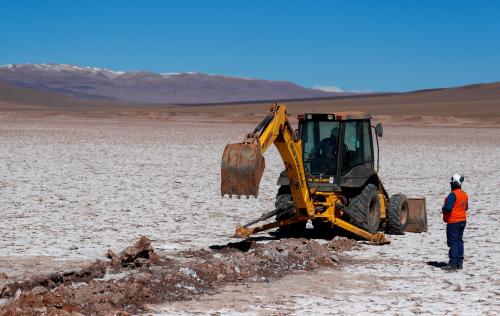For all the talk of a new-energy revolution, one of the biggest energy shifts underway today is fundamentally an old-school one: a boom in oil production in the Permian Basin, a massive swath of land that sprawls across West Texas and southeastern New Mexico. The Permian is where, nearly a century ago, a gusher known as the Santa Rita No. 1 all but inaugurated the Oil Age. Today’s Permian boom resembles those of the past century in two key respects. It results from steady improvement in the technology that’s used to pull oil from the ground. And it is reshaping the geopolitics of energy.
I explore the Permian oil boom in “Lone Star Rising,” a piece in the June 1, 2018, issue of Fortune magazine. To report the story, I spent several days recently in the Permian. As I explain in the Fortune piece, the Permian boom is “a window onto an energy system that’s heading back to the future,” because it puts West Texas, and more broadly the United States, at the forefront of a global oil industry that lately has been more interested in deep water drilling off coasts such as West Africa and Brazil. As the Fortune story explains:
The emergence of the Permian is changing the geopolitics of energy. Oil production in the Permian soared to 3.2 million barrels per day in May. And it helped push total U.S. production above 10.2 million barrels per day in February. That was the highest that U.S. production has been since the federal government began keeping records in 1920—higher even than the prior peak of 10 million barrels per day in November 1970, according to the U.S. Energy Information Administration (EIA). In April, an average of 449 rigs were drilling holes in the Permian, according to market-data firm Baker Hughes. That was 44% of all the rigs drilling that month in the U.S. And it was 22% of all the rigs drilling in the world. Over the past two years, Baker Hughes figures show, the number of rigs drilling in the Permian has more than tripled. A surge in the price of oil over the past year has only added to the urgency of the drillers piling in.
Some compare the Permian’s buried treasure to that of Saudi Arabia’s Ghawar field, widely regarded as the mother of all giant petroleum troves—what the industry calls “elephants.” The Permian is “a huge resource, and it will play out globally,” says Sara Ortwein, president of the XTO Energy unit of Exxon Mobil, No. 2 on this year’s Fortune 500, which already is one of the Permian’s biggest producers and plans to triple its output here by 2025. Adds Vicki Hollub, CEO of Occidental Petroleum, No. 220 on the 500 this year, and another major Permian player that’s doubling down in the region: The region is among “the best basins of the world.”
Close observers of the global energy landscape may ask what’s new here. After all, U.S. oil production has been surging for several years. That’s the result in large part of the “shale revolution”—the combination of horizontal drilling and industrial-scale hydraulic fracturing, or fracking, that has dramatically boosted production from subterranean rocks previously thought impossible to crack economically. The shale revolution has turned once-obscure geological formations—known in the energy business as “unconventional” rock—into cultural landmarks of American energy supremacy: the Bakken, the Marcellus, the Eagle Ford.
What’s new about the Permian against the backdrop of the long-running shale revolution is this: The Permian is the U.S. geological gift that keeps on giving. To a far greater extent than other unconventional U.S. plays, the Permian boasts multiple layers of oily shale—layers that, in the lingo, are known as “pays.” And so the oil industry widely views the Permian as a cut above the rest. Again, from the Fortune piece:
Over the next decade, the Permian will account for two-thirds of the increase in total U.S. oil production and one-quarter of the increase in total global oil production, projects Wood Mackenzie. Simon Flowers, Wood Mackenzie’s chairman for energy, likens the global impact of the Permian to that of North Sea, which ushered in the era of large-scale deepwater drilling some 40 years ago. “The Permian,” he says, “is of that scale.”
Because of its stack of pays and because it already has extensive oil-producing infrastructure in place, the Permian could be a cheaper place to boost global oil production than even some of the spots that traditionally have dominated the oil industry—places such as Russia and Middle East. There are quite a lot of locations in the Permian, “in the best of the sweet spot,” says Flowers, where companies are reporting that they can produce oil with favorable returns at a global oil price lower than $30 per barrel—significantly less expensively than in some other parts of the world. That, says Flowers, raises a discomfiting question for Russia and OPEC: “What do I do when the Permian is eating my lunch?”
It will be fascinating in coming years to watch the world’s other major oil-producing nations answer this question. Already they are reckoning with a seismic shift in the energy market—a shift from a world that, a decade ago, fretted about a supposed Malthusian peak in oil supply to a world that, today, is abuzz with talk of an impending peak in oil demand. The slowdown in oil-demand growth is the result of many factors: less-feverish economic growth in China, which drives global energy markets; more-efficient internal-combustion-powered vehicles; and the rise of a host of technologies that could shift a meaningful segment of transportation away from oil—in particular electric cars and their enabling technologies, from batteries to solar- and wind-powered electricity.
That slowdown in oil-demand growth is one reason that much of the oil industry is bracing itself for an era in which oil prices will be markedly lower than it previously thought. Within much of the industry, this view has come to be known as “lower for longer.” It’s a theme that several of my Brookings colleagues have explored recently; see “The next energy revolution: The promise and peril of high-tech innovation,” a piece that originally ran in summer 2017 in Foreign Affairs, by David Victor, co-chair of the Cross-Brookings Initiative on Energy and Climate, and Kassia Yanosek, of McKinsey & Co.; and “Lower for longer: The implications of low oil and gas prices for China and India,” an October 2017 Brookings report by Samantha Gross, a fellow in the initiative. Within certain parts of the industry, this shift has come to be viewed even more profoundly: Royal Dutch Shell says it is planning for what its executives have come to call a “lower-forever” future, a future that has foundational implications for everything about the oil giant’s global business, as I explored in a February 1, 2018, Fortune piece, “Shell Faces ‘Lower Forever’”.
The boom in the Permian, however, is a huge reminder that the global energy revolution isn’t the result merely of the success of oil alternatives. It is, nearly a century after the iconic Santa Rita find, the result, too, of the success of oil itself.








Commentary
Inside America’s oil boom
June 1, 2018